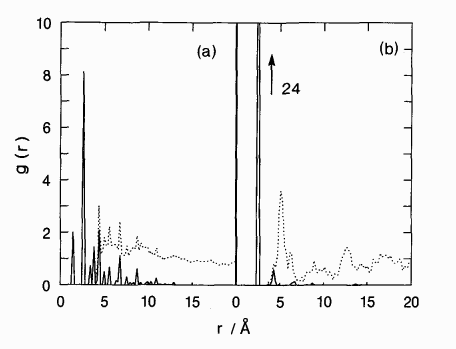Mol. Phys. 79, 457-473 (1993)
Monte Carlo calculations have been used to study the properties of a molecular monolayer self-assembled on a metallic substrate. The surface density and interaction parameters were chosen to represent CH3(CH2)15SH (hexadecyl mercaptan) molecules chemisorbed on the (111) surface of gold. The system studied consisted of 90 alkyl thiol molecules, each modelled by 17 pseudo-atoms and periodically replicated in the plane of the surface. The conformational states of the molecules were sampled by the recently developed configurational-bias Monte Carlo method (Siepmann, J. I., and Frenkel, D., 1992, Molec. Phys., 75, 59). Two different approaches were used to treat the flexibility of the adsorbed molecules. The structures obtained were in both cases ones in which the molecules are preferentially aligned and tilted with respect to the surface normal, but the assumed degree of flexibility of the carbon backbones has a major effect on the degree of translational, orientational and conformational order within the monolayer. Comparison is made with results both from experiments and from molecular dynamics calculations for the same physical system, and the relative merits of the two methods of simulation are discussed.
